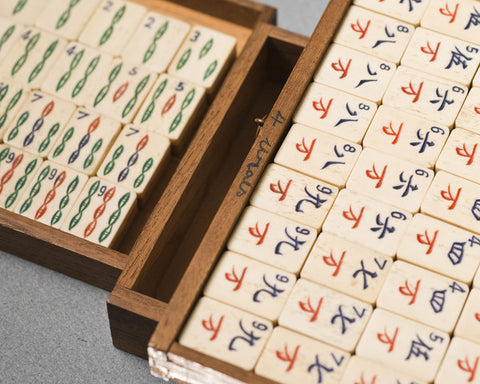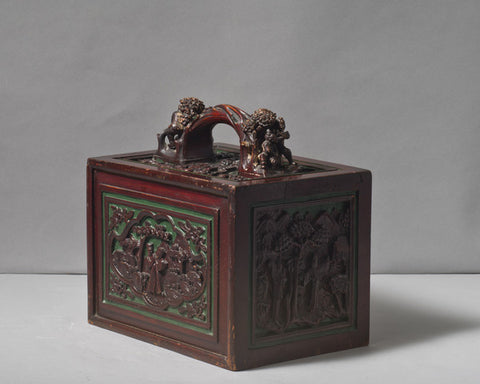
"Welcome to the wonderful world of Mah Jong, an ancient and mysterious game, played for many thousands of years, its origins hidden by the mists of time…"
Don't believe a word of it. Mah Jong (in its modern form) was actually the creation of Joseph Park Babcock (1893-1949), an executive of the Standard Oil Company. In 1912 Babcock was sent to Soochow, China, where he learnt to play a version of a Chinese tile game. Inspired by this, he created a new, simplified game, took out a trade-mark "Mah-Jongg", and exported it back home to America.
The first Mah Jong sets were sold at Abercrombie & Fitch in 1920. The game took off and soon became a massive craze across America, Britain and Europe. In a sense, Babcock was lucky- his new game co-incided with the craze for Chinoiserie (a Western interpretation of all things Oriental) which flourished in the years after the First World War. Have a look at the extraordinary Grauman's Chinese Theatre, built in 1926 on Hollywood Boulevard:

Mah Jong was especially popular with fashionable young women. Here are three bathing beauties playing Mah Jong on Venice Beach, California in 1924:

But if you're interested in buying a vintage Mah Jong set, where to start? First, don't believe anybody who tries to sell you a 19th century Mah Jong set. The genuinely old sets will date to the 1920's and are most likely to have been made in Shanghai for export to the West. With the huge popularity of the game, many new Mah Jong factories were set up in the environs of Shanghai (then an international city more-or-less under control of the Western Powers), and local children were employed to paint the tiles.
Secondly, don't believe anybody who tries to tell you that the tiles are made from ivory. They're not. 99% of Mah Jong tiles are made from either cow bone or 'ivorine' (an early form of plastic) which is then mounted on bamboo. I have never (yet) seen an ivory mahjong set. Jade, yes. But not ivory. The American Mid-West exported huge quantities of cow-bone to China, which was used in the manufacture of Mah Jong sets and then re-exported back to the United States. That Mah Jong tile you're holding in your hand travelled half-way across the world and back again.
So you now want a genuine 1920's mah jong set with bone and bamboo tiles. Which to go for? As an antique dealer, I'm more interested in the finer sets with nicely carved boxes, often featuring dragons, plants and Chinese characters. Box sets with the sliding front panels tend to be better quality. Here's a stylish Mah Jong set I sold to a lucky client last year:

I've posted a close-up of another good example at the top of the page. Here's a further shot of it, below. It's currently in stock, so if you're interested in buying it please get in touch. You can read all about it here.

Comments
There are no comments.
Post Comment